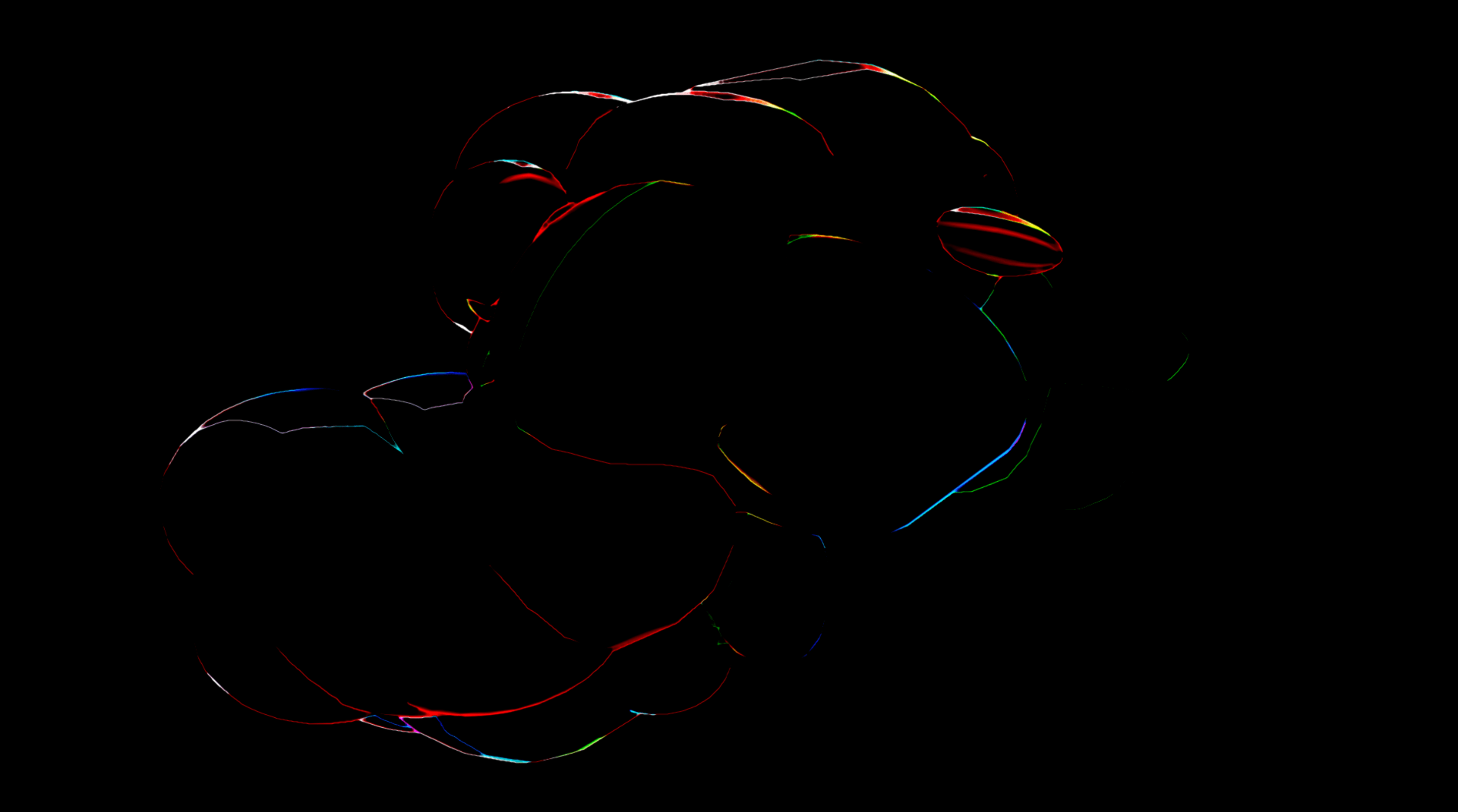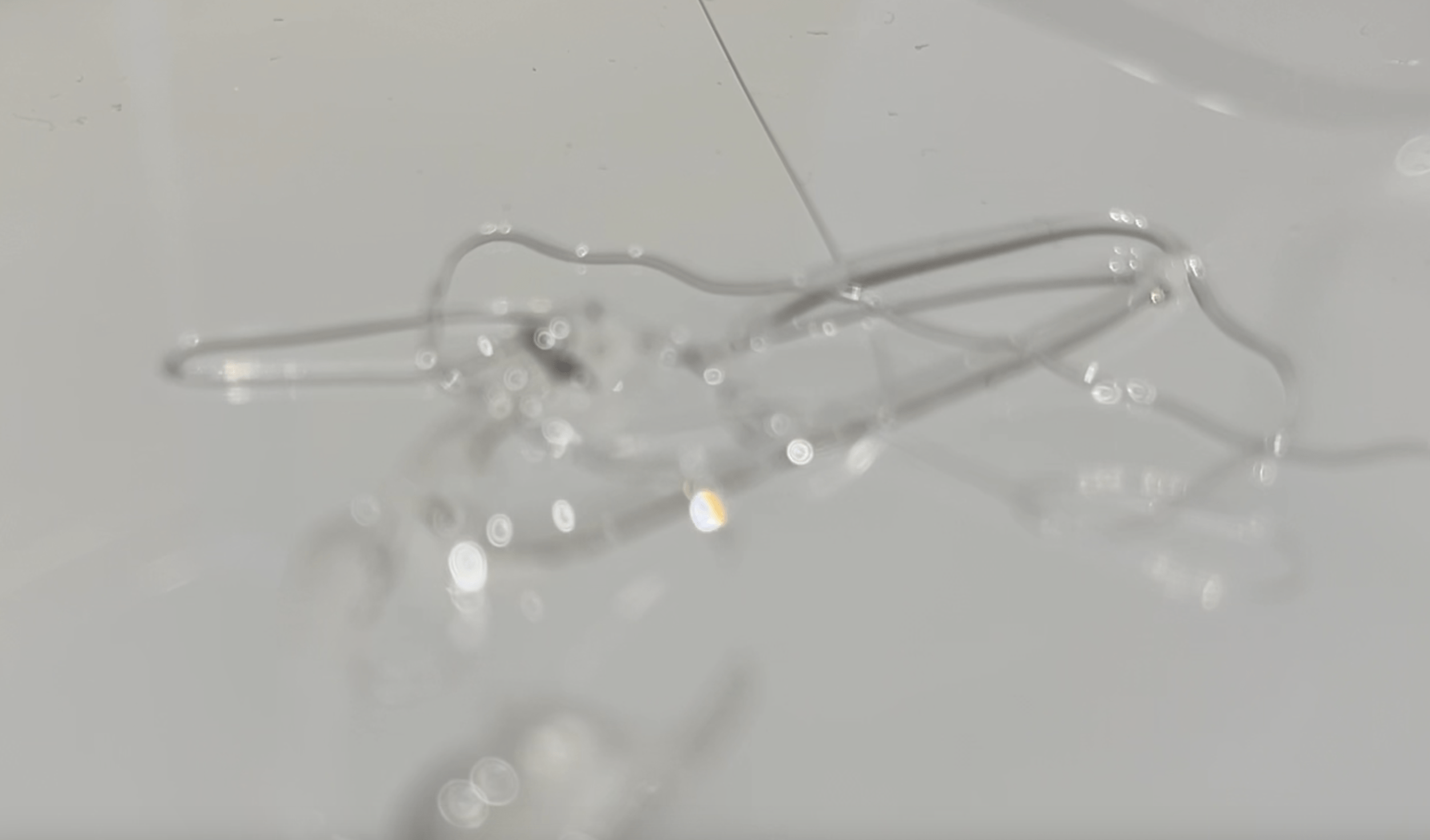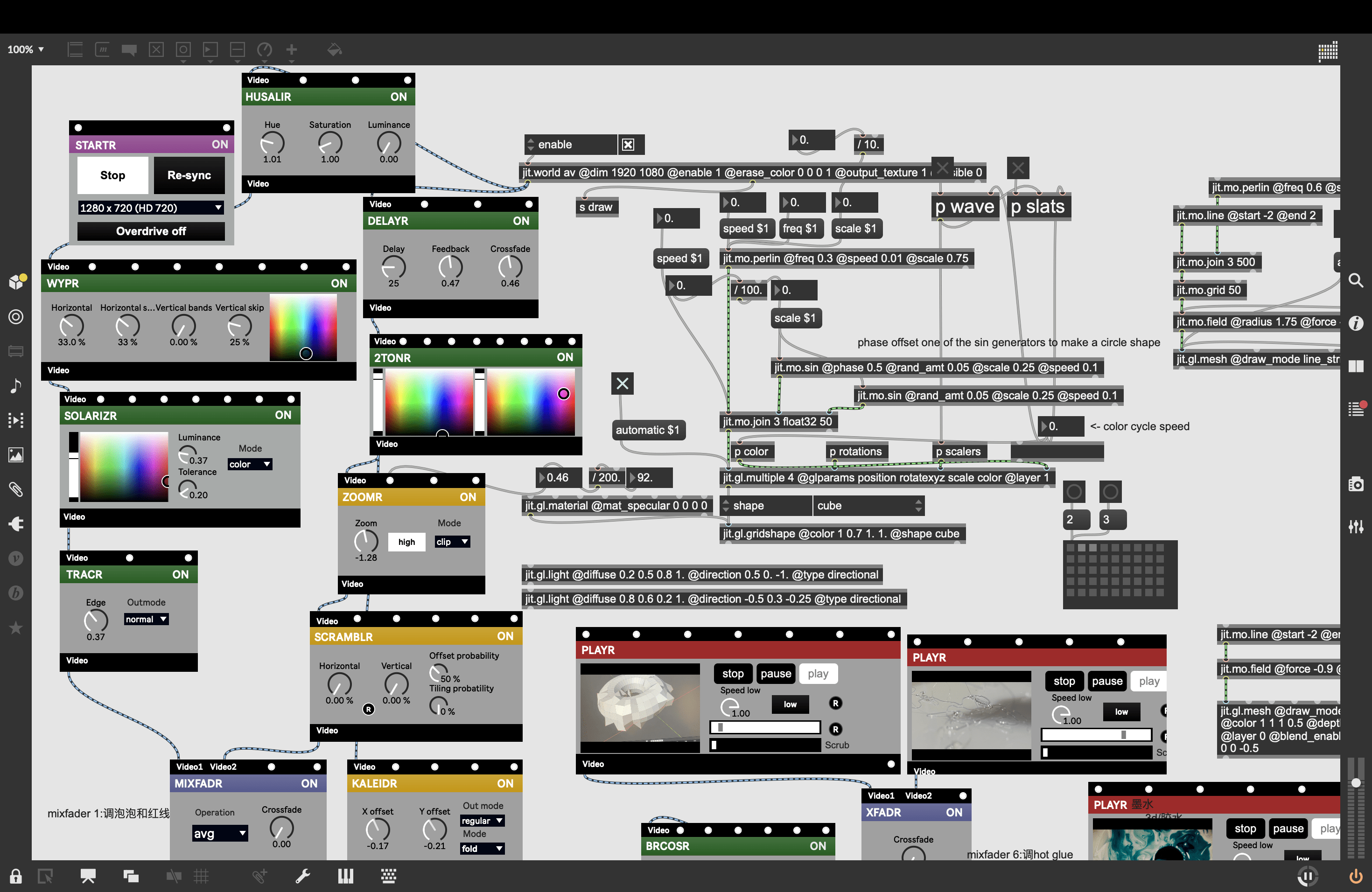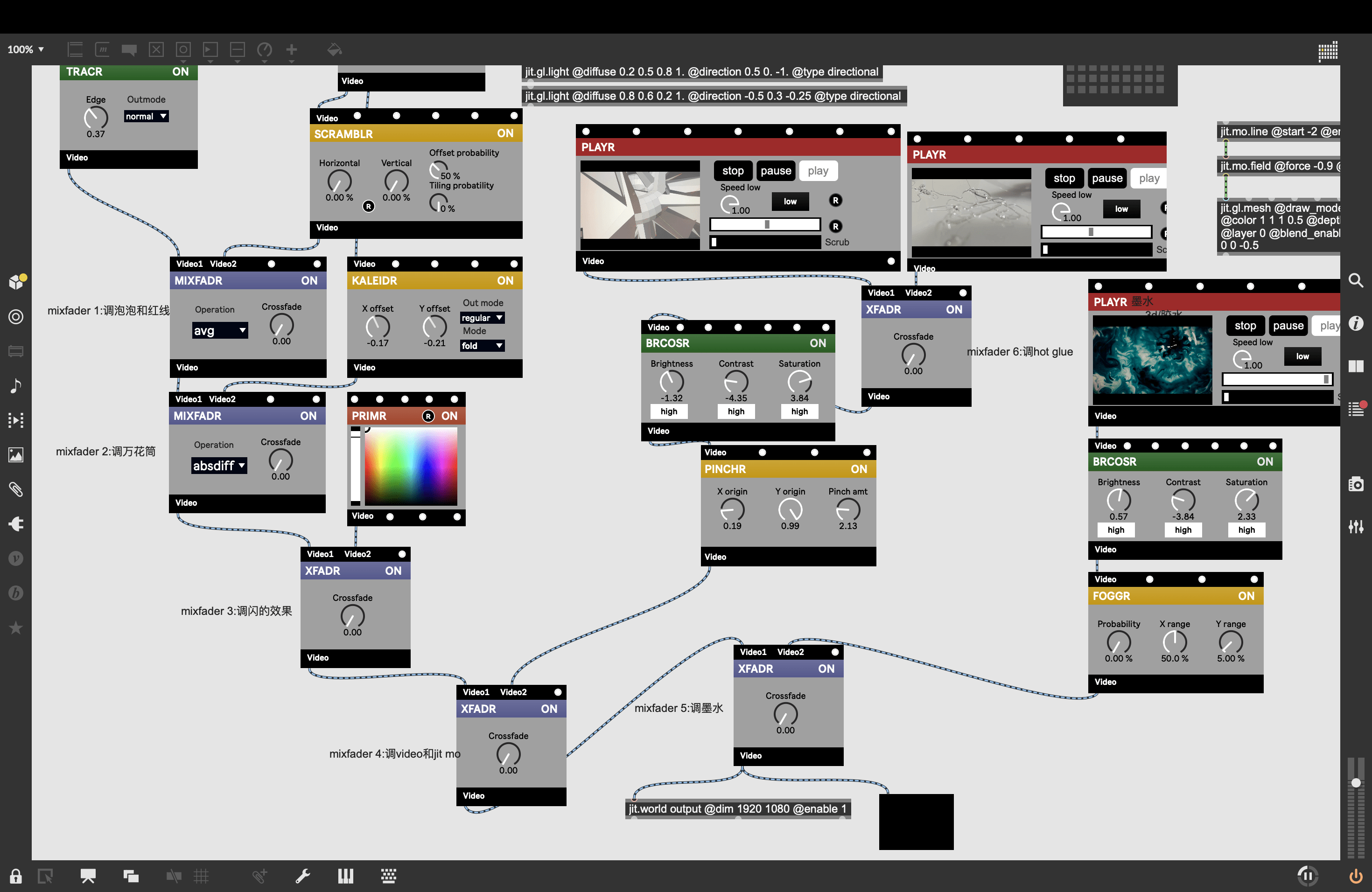Title: REVIVAL by Maggie & Sophia
Project Description
We’re entering an age with nuclear weapons but no nuclear memory. Without fanfare, without even noticing, we may have lost a guardrail keeping us from catastrophe.
— Daniel Immerwahr
REVIVAL is an audio-visual project focusing on the topic of nuclear war. The unaffordable result of using nuclear weapons made the whole world afraid of their power. However, it’s been nearly 70 years since the atomic bomb explosion in Hiroshima and Nagasaki. This fear gradually faded in the modern world, but it’s not good news. At the time that the living memory of nuclear weapons passes out, “we may have lost a crucial safeguard” (Immerwahr). Therefore, we came up with the idea of creating a real-time audiovisual performance to remind people of the danger of nuclear weapons.
Even the “father of the atomic bomb” Oppenheimer admitted that he was afraid of the danger of the atomic bomb. Maggie and I both watched the film Oppenheimer. Even though the film did not show what damage the atomic bomb brought to people, the moment that the atomic bomb exploded shocked us how huge the power of nuclear weapons is. I remember a documentary I watched in class several years ago. The city (Hiroshima/Nagasaki) destroyed by the atomic bomb cannot be called a city anymore – it was exactly hell on earth. The river was polluted and filled with dead people. There were screaming and struggling people, houses set on fire, etc. It’s hard to imagine such weapons are manmade and are targeted at destroying human beings. In comparison, the damage that natural disasters like earthquakes could cause is so little. Therefore, it’s necessary to warn people of the danger and recall the nuclear memory.
Perspective and Context
In this project, we try to create a synesthesia experience for the audience among sounds, different shapes, and colors. The shape and color of the bubbles change with different sounds, for instance, we played the sound of glass tubes, and the shape of bubbles changed as this specific sound played. This, to some extent, indicates the concept of synesthesia since the pattern change matches the sound change. In our performance, there are a lot of scenes similar to synesthesia. The explosion scene and the scene after the explosion (the ink pattern) reveal a good sound-visual reaction.
The early computer animation also inspired us a lot. We used graphical patterns to symbolize the formation and explosion of the atomic bomb. It turned out to be a good choice to use these simple but explicit patterns. The audience understood the concept behind our performance and the visuals matched well with the sounds, especially at the explosion scene. It was also easier for us to modify the movement of different elements in real-time mode by using these graphical patterns generated by the computer.
Development & Technical Implementation
We started with researching the concept of nuclear weapons. We narrowed down our focus to the atomic bomb explosion in two cities in Japan and designed our narrative of the story in our performance. The timeline of performance is the formation of the atomic bomb, the explosion, the scene after the explosion, and then the assumption that everything restarts and the atomic bomb is disintegrated. To make these different scenes and sounds, we applied different methods. For the sound part, we tried to record some sounds that we thought might be useful at first, for example, we recorded the sound of Erhu, a Chinese instrument. However, we found that these sounds could not achieve the ideal result and effect we wanted. So Maggie used some music and sounds downloaded from the website Freesound. She also used GarageBand to make and process sounds and music and make the long base sound. After creating these sounds, Maggie imported them into Max and used different sound effects. She played different effects and pieces of sound in certain periods. during the performance.
I was responsible for the visual part. We tried to record some videos together at first. Some of them turned out to be good when I imported them into Max and added some effects. The video of the hot glue, ink, as well as 3D model, matched our topic of nuclear war well and they were beautiful when I added some effects (e.g. BRCOSR & Fogger) to them on max. But I realized that it’s hard to record videos for some scenes, for example, the explosion. Therefore, I started to try using jit. mo to remake some interesting patterns symbolizing the formation and explosion of the atomic bomb. By adjusting the values of the computer animation we got really nice patterns with variable shapes, movement, and colors. More importantly, we can change the visuals in a real-time mode by adjusting these values of jit. mo and video effects.
After preparing all the visual parts and sounds, we started to rehearse. We used two MIDIMIX boxes for sound and visual relatively. In case the computer stuck, we played sound and visuals on two computers. To add liveliness to the performance, we decided to change some values during the performance so we assigned the buttons, knobs, and slide switches on midi boxes with different values on our Max patches. During the live performance, we adjusted these values on midi boxes following the time order.
Performance
Since Maggie and I rehearsed many times before the performance and we were familiar with what our task was at different time periods, we didn’t make major mistakes in our final project showcase. We cooperated well to modify the sounds and videos. Maggie played some sounds and adjusted sound effects at certain scenes, and I modified the shapes and colors of visual patterns when hearing the sound change. One thing I like about real-time performance is that in every performance (or every time we practice), we may come up with different ideas and try them out to make the performance look and sound better. I enjoyed changing the visual patterns at the beats of the music.
Even though most of the time our performance went well, there were some problems in the final performance. The sound of the explosion did not come out at first, and there was something wrong with the shining effect of the explosion. These two problems never appeared in our rehearsals. Another problem is that when I switched to the scene after the explosion, the contrast of the video was too low and it was dark when I switched. It should have been filled with red and blue. These three problems could be solved and the performance could have been better without these problems.
Conclusion
This time, compared with the midterm, Maggie and I had a better task assignment and thus our working efficiency was improved. I focused on making the visuals and she focused on making the sounds. The time we prepare videos and sounds decreased and the time for rehearsals increased. However, one problem with this mode is that we had little communication to discuss the sounds and videos. I didn’t know how the visual patterns would fit the sound until the first rehearsal. Maybe we should cooperate more closely with each other to make the sounds and videos match better.
In conclusion, in Project 3, we learned how to make a real audiovisual performance. Personally, I prefer computer animations (e.g. graphical patterns) in this kind of performance because these patterns have high-resolution values compared with recorded videos. I could not import large-size videos because Max will be stuck. If we had more time, we will solve the resolution problem and maybe make the project with jit. mo and other computational ways completely. After all, I’m satisfied with the beautiful visuals we generated by using the recorded videos of things in daily life (hot glue, 3D model, and ink). In general, I like how we can modify the videos and sounds in live performances and the randomness of each performance.
Work Cited
Immerwahr, Daniel. “Forgetting the Apocalypse: Why Our Nuclear Fears Faded – and Why That’s Dangerous.” The Guardian, 12 May 2022, www.theguardian.com/world/2022/may/12/forgetting-the-apocalypse-why-our-nuclear-fears-faded-and-why-thats-dangerous.






Leave a Reply